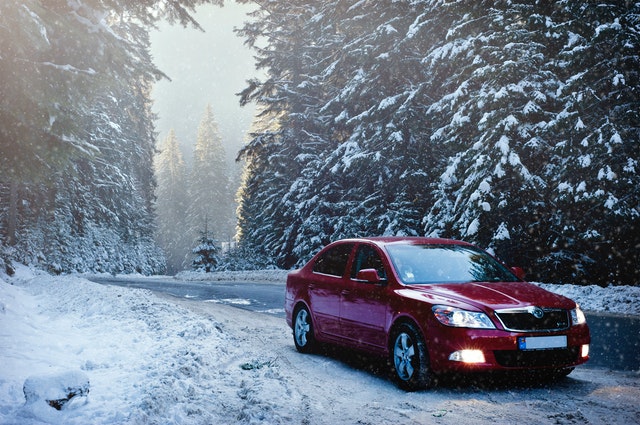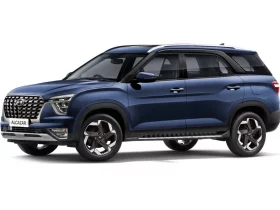As the cold winter approaches, it’s a good idea to inspect your vehicle’s tyres and make other safety precautions. Winter weather frequently includes snow, ice-covered roadways, and extremely low temperatures. These conditions necessitate adequate preparations, such as regular tyre and motor fluid checks and the storage of a winter emergency kit and other supplies in the car. According to the AAA Foundation for Traffic Safety, “winter storms, poor weather, and sloppy road conditions play a role in over half a million accidents and over 2,000 road deaths each winter.”
While preparing your car might assist, the greatest way to prepare for winter driving is to feel secure behind the wheel. Car Driving school Brampton and Mississauga run by “Good Drivers” can teach you how to drive in winter conditions. We are committed to safe driving and feel that it is critical to developing each student’s approach and behaviour. At Good Drivers, our instructors care about your Safety and the Quality education you receive at our training centre. Individualized driving lessons at Brampton are available to assist you in getting more comfortable with your car throughout the year. In addition, proper planning for your car or corporate fleet may aid in the protection of you, your family, your employees, and your company. With the help of our professional instructors, we have prepared a list of winter car checks that will help your car prepare for winter driving.
Check your tyres
In most cases, if you live in a snowy area, you will need snow tyres or all-season tyres in the winter. These are your best bet for good traction. The importance of proper inflation and overall tread life cannot be overstated. Under normal conditions, tyres lose one psi each month; cold weather adds one psi for every 10 degrees drop in temperature. It is suggested that tyre pressure be checked at least once a month. Check your car information sticker or the manufacturer’s handbook to find out what your tyre pressure should be. Remember to include a check for your spare tyre. The tread depth should be checked, with a minimum of 2/32″ or more recommended. Check the tyres for additional flaws such as nicks, bulges, fractures, and cuts, as well as uneven wear. You may also need to check that your wheels are correctly balanced and aligned.
Winterize your car
Winterizing your vehicle is also essential at this time of year. There are a few things to think about under the hood:
Engine oil: Many cars have dangerously low engine oil levels, which is a leading cause of failures. If your oil level is low and you do not get it filled up or changed, you risk engine damage, which is highly expensive to repair. You may inspect it by removing the dipstick and wiping away the oil with a paper towel or cloth. Put the dipstick back in thoroughly, then pull it out again. The oil level should be between the minimum and maximum marks. If it is below, be sure to top it off with the oil suggested in your automobile handbook.
Coolant: This fluid protects your engine from overheating and, in cold conditions, from freezing. You must ensure that the fluid is between the minimum and max markers, like the engine oil. In the winter, the optimal water-to-antifreeze ratio is typically 40% tap water and 60% antifreeze. Check your engine coolant to ensure you have the proper antifreeze/water mixture to prevent fluid from freezing in your radiator. There are testers available at your local auto parts store, and the proper mix can be found by consulting your vehicle’s manufacturer.
Wiper fluid: You don’t want to be stuck on the road without enough wiper fluid. It’s critical to be able to see clearly out your window, so make sure you have “freeze resistant wiper fluid.” Wiper blades that are worn or broken should be replaced.
The capacity of your battery: The cold temperature reduces the power of your battery. A comprehensive examination of your battery, cables, terminals, and fluid will ensure that your automobile is winter-ready. Check for cracks and splits in the battery wires. There should be no loose connections between the terminals. It’s a good decision to have your technician check the battery fluid and overall capacity regularly, especially before the winter months.
Prepare yourself
Make sure you have everything you need before embarking on a journey this winter. Make sure you have a winter vehicle EMERGENCY kit in your car so you’re ready for any emergency that may arise. This kit should contain a blanket, reflective clothing, flashlights, food and drink supplies, a de-icer and scraper, and a portable phone charger. Before you leave, check the weather forecast and traffic conditions, and plan your route.
Following these steps will guarantee that your vehicle is winter-ready. The last thing to remember is that you take care of everything if your car has any difficulties or if you require substantial maintenance on them. The last thing you need is to be trapped in the cold to prevent a problem. The fewer problems you plan, the less you have to solve.












